网页的内容
有网络专题特展,介绍有关历史话题的《亚洲历史资料中心专题》等各种内容。
网络专题特展・特辑(英文)
参照官方资料探索各种历史事件的展示区。
-
Japan's Wartime and Postwar Periods Recorded
(Released in December 2016)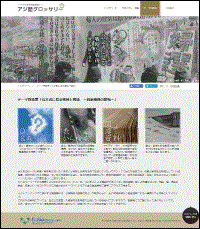
How has Japanese culture today continued to be shaped by the Second World War? In what ways have Japanese stayed rooted in a prewar social structure while absorbing policies of the Allied Occupation? This web exhibition uses public records to explore how, in the pre- and postwar periods, Japan was politically transformed in areas of economics, society and culture.
-
Post-World War Two Demobilization and Repatriation
(Released in February 2016)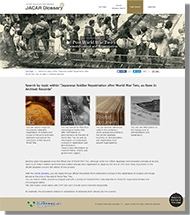
With this web exhibition, you can easily browse official documents from institutions involved in the repatriation of civilians and troops abroad at the time of the end of World War Two. You can search within records by brigade and with a variety of methods from map searches to those for organizational data and chronological tables.
-
A Window into the Early Showa Period -Shashin Shuho : Weekly Photographical Journal, 1938-1945-
(Released in March 2015)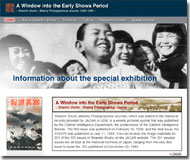
Shashin Shuho (Weekly Photographical Journal) was founded by the Cabinet Intelligence Department of Japan in February 1938. This pictorial magazine was published almost weekly for more than seven years until the 375th volume in July 1945. This exhibition traces a society, people's life and transition of the wars in the early Showa period Japan by numerous photographic articles on this journal, along with various related documents.
-
The Sino-Japanese War of 1894-1895 : as seen in prints and archives
(Released in May 2014)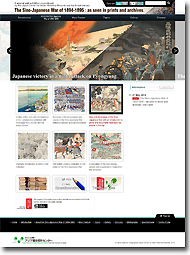
This web exhibition has been produced as a collaboration between JACAR and the British Library. Its aim is to bring together the collection of prints of the Sino-Japanese War held by the British Library and documents made public by JACAR to show how the events of the Sino-Japanese War were depicted and recorded by the people of the time.
-
The US-Japan War Talks -as seen in official documents-
(Released in May 2007)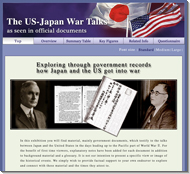
In an effort to break the deadlock between the US and Japan following the signing of the Tripartite Pact, Bishop James Walsh and Father James Drought visited Japan to make an appeal for peace to Foreign Minister Matsuoka and other Government / Army leaders. This resulted in the "Draft Understanding" which was to be presented by Ambassador Kichisaburo Nomura to Secretary of State Cordell Hull on 16 April 1941. Nomura's appointment early that year as Ambassador to the US marked a new phase in US-Japan relations.
-
The Russo-Japanese War -as seen in official documents-
(Released in May 2007)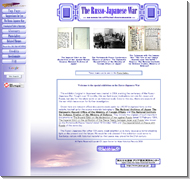
This exhibition was created in 2004, marking the centenary of the Russo-Japanese War. Fought over 18 months, this war held major implications not only for Japan and Russia, but for the whole world on an historical scale. Even to this day, there are aspects of the war which leave room for further investigation. The Russo-Japanese War, after 100 years, could enlighten us in many ways as a mirror shedding light on the present and the future.
-
Special feature: Japan Center for Asian Historical Records Introduction of Released Documents on the End of the Pacific War
(Released in July 2010)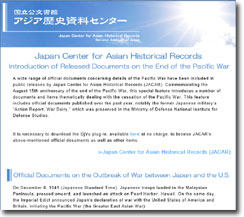
The anniversaries of the end of the World War II differ by country. It is August 15th 1945 for Japan. On that day, the Emperor himself directly announced through radio broadcast Japan's acceptance of Potsdam Declaration, which means the end of the war. This online exhibit features the documents concerning the end of the Pacific War, such as the Potsdam Declaration, Imperial Edict of the War Termination, Imperial Edict on the Declaration of War, records about Kamikaze and the battleship Yamato, as well as the Hull Note (officially named: The Outline of Proposed Basis for Agreement Between the United States and Japan).
